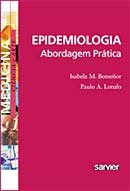The ADVANTAGE Seeding Trial: A Review of Internal Documents Kevin P. Hill, MD, MHS; Joseph S. Ross, MD, MHS; David S. Egilman, MD, MPH; and Harlan M. Krumholz, MD, SM
Annals of Internal Medicine 19 August 2008 Volume 149 Issue 4 Pages 251-8
Background: Seeding trials, clinical studies conducted by pharmaceutical companies that are designed to seem as if they answer a scientific question but primarily fulfill marketing objectives, have not been described in detail.
Purpose: To describe a known seeding trial, ADVANTAGE (Assessment of Differences between Vioxx and Naproxen To Ascertain Gastrointestinal Tolerability and Effectiveness), through documents of the trial sponsor, Merck & Co. (Whitehouse Station, New Jersey).
Data Sources: Merck internal and external correspondence, reports, and presentations elicited to inform legal proceedings of Cona v Merck and Co., Inc., and McDarby v Merck and Co., Inc. The documents were created between 1998 and 2006.
Data Extraction: An iterative case-study process of review, discussion, and re-review of documents to identify themes relevant to the design and conduct of ADVANTAGE. To supplement the case-study review, the authors did a systematic review of the literature to identify published manuscripts focused on seeding trials and their conduct.
Data Synthesis: Review of the documents revealed 3 key themes: The trial was designed by Merck's marketing division to fulfill a marketing objective; Merck's marketing division handled both the scientific and the marketing data, including collection, analysis, and dissemination; and Merck hid the marketing nature of the trial from participants, physician investigators, and institutional review board members. Although the systematic review of the literature identified 6 articles that focused on the practice of seeding trials, none provided documentary evidence of their existence or conduct.
Limitations: The legal documents in these cases provide useful, but limited, information about the practices of the pharmaceutical industry. This description of 1 company's actions is incomplete and may have limited generalizability.
Conclusion: Documentary evidence shows that ADVANTAGE is an example of marketing framed as science. The documents indicate that ADVANTAGE was a seeding trial developed by Merck's marketing division to promote prescription of Vioxx (rofecoxib) when it became available on the market in 1999
 Em breve, o Framingham Heart Study completará 60 anos. Esse estudo iniciado em 1948 com mais de 5 mil pessoas na cidade do mesmo nome, próxima a Boston representa um dos grandes legados da epidemiologia à ciência e saúde pública. Impossível falar em fatores de risco cardiovascular sem os resultados de Framingham.
Em breve, o Framingham Heart Study completará 60 anos. Esse estudo iniciado em 1948 com mais de 5 mil pessoas na cidade do mesmo nome, próxima a Boston representa um dos grandes legados da epidemiologia à ciência e saúde pública. Impossível falar em fatores de risco cardiovascular sem os resultados de Framingham. 